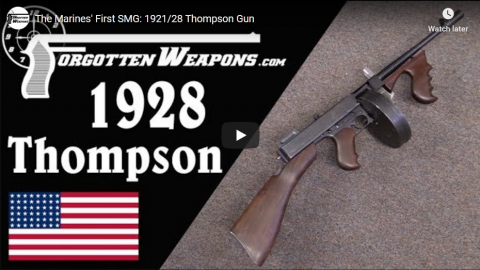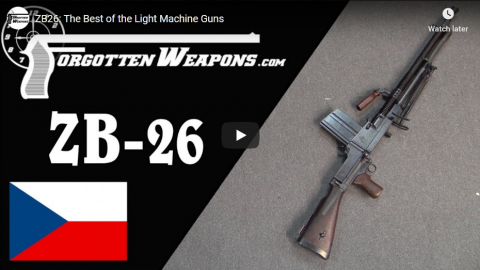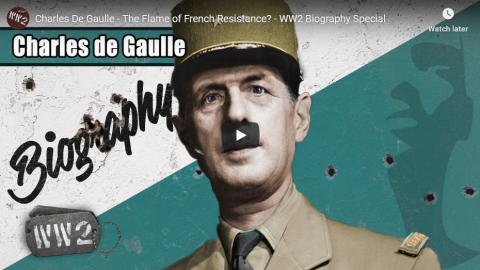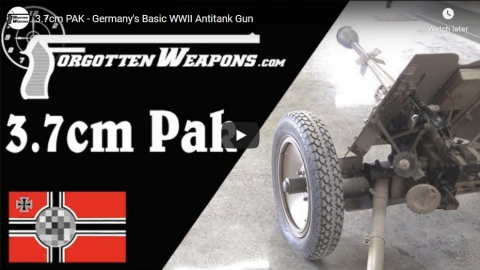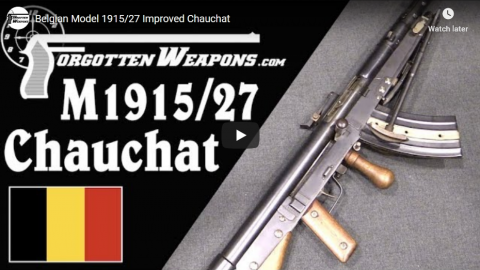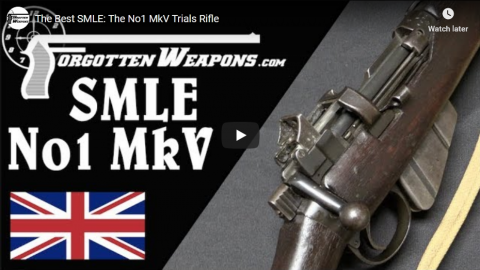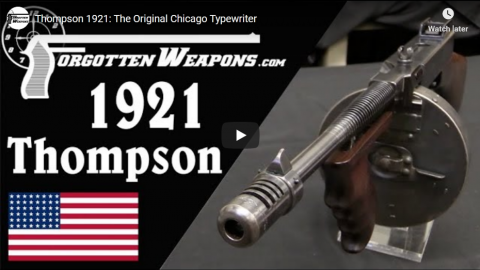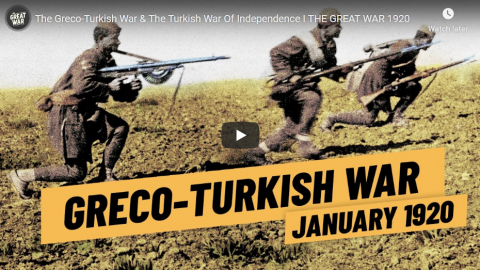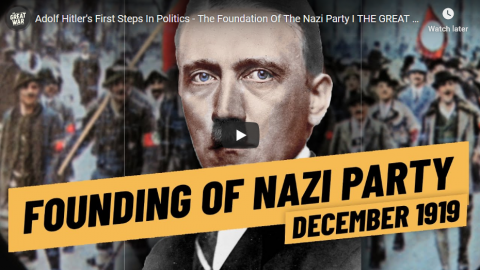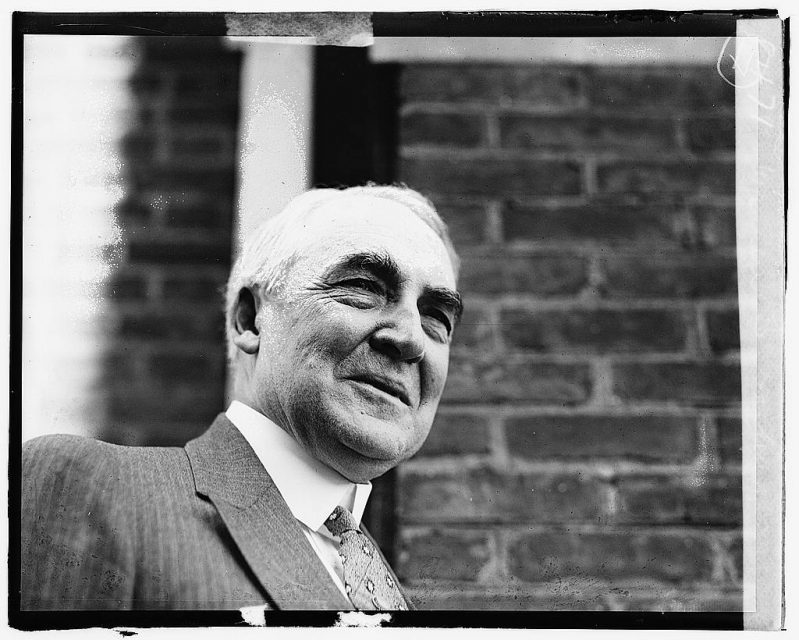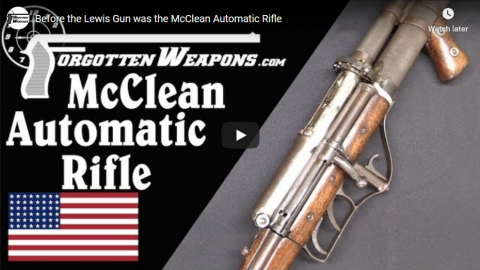Forgotten Weapons
Published 9 Oct 2018https://www.forgottenweapons.com/the-…
http://www.patreon.com/ForgottenWeapons
Cool Forgotten Weapons merch! http://shop.bbtv.com/collections/forg…
The USMC had acquired a few hundred early 1921 model Thompson submachine guns in 1926, and prompted the US Navy to formally test the guns. The Navy requested a reduction in the rate of fire, in order to improve controllability and reduce ammunition consumption (20 round magazines go quickly at 900rpm!). Auto-Ordnance happily complied, and Oscar Payne returned to the company on his spare time to modify the gun. He did this by adding a substantial amount of mass to the actuator, and was able to reduce the rate of fire substantially. The Navy subsequently ordered 500 guns, designated the Model of 1928.
Since most of the original 15,000 guns made by Colt were still in inventory, Auto-Ordnance simply overstamped the “1” at the end of “1921” with an “8” and put the new heavier bolt assemblies in the guns, leading to the collector term “21/28 overstamp” for these Thompsons. The lower rate of fire would become the new standard for the Thompson.
By late 1928, only about 6,000 Thompsons had been sold, and by the end of 1938 10,300 had been sold. Of these, about 1500 total had gone to the US government, about 4100 exported, and the remainder to American police and security agencies. Times were not good for the Thompson — it was an expensive military weapon without a war that needed it. Despite the gun’s huge notoriety, it was actually not used in particularly large numbers by the motor bandits of the 20s and 30s, nor in great numbers by the police. While the FBI did purchase Thompsons, they only bought 115 in total, and not until 1935.
This is the second part in a 5-part series on the development of the Thompson…
Contact:
Forgotten Weapons
PO Box 87647
Tucson, AZ 85754If you enjoy Forgotten Weapons, check out its sister channel, InRangeTV! http://www.youtube.com/InRangeTVShow
June 8, 2020
The Marines’ First SMG: 1921/28 Thompson Gun
May 30, 2020
The Spanish Flu Influenza Pandemic 1918 – 1920 I THE GREAT WAR 1920
The Great War
Published 29 May 2020Sign up for Curiosity Stream and get Nebula bundled in: https://curiositystream.com/thegreatwar
It was far deadlier than even the global war that had preceded it: The Influenza pandemic or Spanish Flu that hit the world between 1918 and 1920 in multiple waves.
» SUPPORT THE CHANNEL
Patreon: https://www.patreon.com/thegreatwar
Merchandise: https://shop.spreadshirt.de/thegreatwar/» SOURCES
Barry, John M. The Great Influenza: The Story of the Deadliest Pandemic in History, (New York : Penguin Books, 2018)
Byerly, Carol R. ‘The U.S. Military and the Influenza Pandemic of 1918–1919’ Public Health Reports; 125 Supplement 3 (Apr. 2010)
Crosby, Alfred W, America’s forgotten pandemic : the influenza of 1918, (Cambridge : Cambridge University Press, 2003)
Hoover, Irwin Hood, Forty-two years in the White House, (New York : Houghton Mifflin Co., 1934)
Killingray, David & Phillips, Howard, (eds.) The Spanish Influenza Pandemic of 1918-19: New Perspectives, (London : Routledge, 2011)
Johnson, NP & Mueller J, ‘Updating the accounts: global mortality of the 1918-1920 “Spanish” influenza pandemic’ Bulletin of the History of Medicine. 76(1) (Spring 2002)
Dock, Lavinia et al., History of American Red Cross Nursing (1922)
Macdonald L. The Roses of No Man’s Land. (London : Penguin Books, 1993)
Robertson, John Dill, ‘Spanish Influenza — The Flu’ The Public Health Journal Vol. 9, No. 10 (Oct 1918)
Rosner, David, ‘”Spanish flu, or whatever it is…”: The paradox of public health in a time of crisis’ Public Health Reports, 125 Supplement 3, (Apr. 2010)
Stanford University, ‘The Influenza Pandemic of 1918’ https://virus.stanford.edu/uda/
“Surgeon General’s Advice to Avoid Influenza”: Washington Evening Star, (Sept. 22, 1918)
Wever, Peter C & van Bergen, Leo, ‘Death from 1918 pandemic influenza during the First World War: a perspective from personal and anecdotal evidence’ Influenza Other Respiratory Viruses, 8(5), (Sept 2014)
https://www.lefigaro.fr/livres/2008/1…» SOCIAL MEDIA
Instagram: https://instagram.com/the_great_war
Twitter: https://twitter.com/WW1_Series
Reddit: https://reddit.com/r/TheGreatWarChannel»CREDITS
Presented by: Jesse Alexander
Written by: Jesse Alexander
Director: Toni Steller & Florian Wittig
Director of Photography: Toni Steller
Sound: Toni Steller
Editing: Toni Steller
Mixing, Mastering & Sound Design: http://above-zero.com
Maps: Daniel Kogosov (https://www.patreon.com/Zalezsky)
Research by: Jesse Alexander
Fact checking: Florian WittigChannel Design: Alexander Clark
Original Logo: David van StepholdA Mediakraft Networks Original Channel
Contains licensed material by getty images
All rights reserved – Real Time History GmbH 2020
May 20, 2020
ZB26: The Best of the Light Machine Guns
Forgotten Weapons
Published 26 Oct 2017Sold for $34,500 (transferrable).
The ZB-26 stands as one of the best magazine-fed light machine guns developed during the 1920s and 30s – it was a very popular gun for small military forces and many countries which did not directly buy it were strongly influenced by it. The Japanese Nambu Type 96 and 99 were heavily based on the ZB, and the British Bren was a direct evolution licensed from Brno.
The design dates back to 1921, when the Czech government began searching for a modern light machine gun. They tested pretty much all the guns available on the market at the time, and also solicited guns from Czechoslovak designers. Brothers Vaclav and Emmanuel Holek submitted their I-23 light machine gun, which would become the ZB-26 (LK vizor 26 in Czech terminology) and become the official Czechoslovak light machine gun as well as a popular commercial export for the ZB factory. More than 120,000 were made in several different calibers and sold to 24 countries between 1926 and 1939.
When the Germans occupied Czechoslovakia, they seized a huge number of these guns both from the military and guns still in the factory. This particular one was part of a Spanish purchase contract, but was completed under the oversight of Heinrich Krieghoff and supplied to German forces.
Mechanically, the ZB-26 uses a tilting bolt and a long stroke gas piston, in a combination that would be copied in many later designs. It is robust, accurate, controllable, and handy – a truly excellent all-around light machine gun.
http://www.patreon.com/ForgottenWeapons
Cool Forgotten Weapons merch! http://shop.bbtv.com/collections/forg…
If you enjoy Forgotten Weapons, check out its sister channel, InRangeTV! http://www.youtube.com/InRangeTVShow
May 16, 2020
Polish-Soviet War – First Phase 1919 – May 1920 I THE GREAT WAR 1920
The Great War
Published 15 May 2020Sign up for Curiosity Stream and Nebula – and get 40% off annual plans right now: https://curiositystream.com/thegreatwar
The Polish-Soviet War was one of the biggest conflicts after the armistice of 1918 and the culmination point of the many sub-conflicts that made up the Western Front of the Russian Civil War. The question about the Polish-Russian border was decided with armored trains, cavalry charges and also on the negotiating table.
» SUPPORT THE CHANNEL
Patreon: https://www.patreon.com/thegreatwar
Merchandise: https://shop.spreadshirt.de/thegreatwar/» SOURCES
Centek, Jarosław: “Polish-Soviet War 1920-1921”, in: 1914-1918-online. International Encyclopedia of the First World War, ed. by Ute Daniel, Peter Gatrell, Oliver Janz, Heather Jones, Jennifer Keene, Alan Kramer, and Bill Nasson, issued by Freie Universität Berlin, Berlin 2014-10-08Leonhard, Jörn. Der überforderte Frieden. Versailles und die Welt 1918-1923 (CH Beck, 2018).
Borzecki, Jerzy. The Polish-Soviet Peace of 1921 and the Creation of Interwar Europe (New Haven and London: Yale University Press, 2008)
Engelstein, Laura. Russia in Flames (Oxford University Press, 2017).
Smele, Jonathan. The “Russian” Civil Wars 1916-1926 (London: Hurst, 2015).
Davies, Norman. White Eagle Red Star (Random House, 2003 (1972))
Böhler, Jochen. Civil War in Central Europe, 1918-1921 (Oxford University Press, 2019)
Timothy Snyder. The Reconstruction of Nations. (New Haven: Yale University Press, 2003)
» SOCIAL MEDIA
Instagram: https://instagram.com/the_great_war
Twitter: https://twitter.com/WW1_Series
Reddit: https://reddit.com/r/TheGreatWarChannel»CREDITS
Presented by: Jesse Alexander
Written by: Jesse Alexander
Director: Toni Steller & Florian Wittig
Director of Photography: Toni Steller
Sound: Toni Steller
Editing: Toni Steller
Mixing, Mastering & Sound Design: http://above-zero.com
Maps: Daniel Kogosov (https://www.patreon.com/Zalezsky)
Research by: Jesse Alexander
Fact checking: Florian WittigChannel Design: Alexander Clark
Original Logo: David van StepholdA Mediakraft Networks Original Channel
Contains licensed material by getty images
All rights reserved – Real Time History GmbH 2020
April 17, 2020
Charles De Gaulle – The Flame of French Resistance? – WW2 Biography Special
World War Two
Published 16 Apr 2020Charles De Gaulle is a towering figure in history, and not just because of his height. Becoming increasingly political in the interwar years due to his unorthodox views on military strategy, The Fall of France will thrust him into the limelight.
Join us on Patreon: https://www.patreon.com/TimeGhostHistory
Or join The TimeGhost Army directly at: https://timeghost.tvFollow WW2 day by day on Instagram @World_war_two_realtime https://www.instagram.com/world_war_t…
Between 2 Wars: https://www.youtube.com/playlist?list…
Source list: http://bit.ly/WW2sourcesHosted by: Indy Neidell
Written by: Francis van Berkel
Director: Astrid Deinhard
Producers: Astrid Deinhard and Spartacus Olsson
Executive Producers: Astrid Deinhard, Indy Neidell, Spartacus Olsson, Bodo Rittenauer
Creative Producer: Joram Appel
Post-Production Director: Wieke Kapteijns
Research by: Catherine Burton
Edited by: Mikołaj Cackowski
Sound design: Marek Kamiński
Map animations: Eastory (https://www.youtube.com/c/eastory)Colorizations by:
Carlos Ortega Pereira, BlauColorizations, https://www.instagram.com/blaucoloriz…
Dememorabilia – https://www.instagram.com/dememorabilia/
Norman Stewart – https://oldtimesincolor.blogspot.com/
Adrien Fillon – https://www.instagram.com/adrien.colo…
Sources:
Outdoor family portrait, with lurkers (c.1920), courtesy pellethepoet https://flic.kr/p/ompxgf
IWM A 1464, E 2324, D 1966
Frederick Milthorp collectionSoundtracks from the Epidemic Sound:
Max Anson – “Ancient Saga”
Farell Wooten – “Blunt Object”
Johannes Bornlof – “Deviation in Time”
Reynard Seidel – “Deflection”
Johannes Bornlof – “The Inspector 4”
Phoenix Tail – “At the Front”Archive by Screenocean/Reuters https://www.screenocean.com.
A TimeGhost chronological documentary produced by OnLion Entertainment GmbH.
April 13, 2020
Curator’s Tank Museum Tour: Tank Story Hall – Inter-War | The Tank Museum
The Tank Museum
Published 11 Apr 2020Join Curator David Willey as he takes you on a tour of The Tank Museum’s Tank Story Hall, which houses over 30 key vehicles from Little Willie to Challenger 2. In this section he looks at the inter-war vehicles and gives you a potted history of the time period between the two World Wars.
Support the work of The Tank Museum on Patreon: ► https://www.patreon.com/tankmuseum
Visit The Tank Museum SHOP & become a Friend: ► https://tankmuseumshop.org/Twitter: ► https://twitter.com/TankMuseum
Instagram: ► https://www.instagram.com/tankmuseum/
Tiger Tank Blog: ► http://blog.tiger-tank.com/
Tank 100 First World War Centenary Blog: ► http://tank100.com/
April 11, 2020
3.7cm PAK – Germany’s Basic WWII Antitank Gun
Forgotten Weapons
Published 10 Dec 2019http://www.patreon.com/ForgottenWeapons
Cool Forgotten Weapons merch! http://shop.bbtv.com/collections/forg…
Germany developed its first 37mm (or as German designations put it, 3.7cm) antitank gun in the last months of World War One; a very simple design built using barrels from obsolete Hotchkiss revolving cannons. In the mid 1920s, the concept was reinvigorated by Rheinmetall, which developed a much more modern 37mm gun using a much larger and higher-pressure case (37 x 249mm). In its initial pattern, the Tak as it was called (Tankabwerhkanone) has wooden spoke wheels and no suspension, intended for transport by horse. A small number were made for the German military (to avoid aggravating the conditions of the Treaty of Versailles), and the gun was sold commercially by Rheinmetall. The Soviet Union in particular was interested, and used the 3.7cm Tak as the basis for its later 45mm antitank gun.
Between 1934 and 1936, a number of changes were made to the design. The wooden wheels were replaced with steel wheels and pneumatic rubber tires, and spring suspension was added to allow the gun to be towed at higher speed by motor vehicles. The designation also changed at the time from Tank-abwehrKanone to Panzer-abwehrKanone, as the new term “panzer” entered German military parlance. Under Germany’s 1930s rearmament program, the Versailles limitations were ignored, and Pak production took off. By September of 1939, the German military has some 11,200 of the guns in service. They were solid dependable guns at the beginning of World War Two, but became obsolete by 1941 as tank armor began to rapidly increase. A new tungsten-core AP round was introduced in 1940, and a rifle-grenade-like hollow charge munition (the Stielgranate 41) added in 1941, but there was stopgaps at best. The last few 3.7mm Paks were built in early 1942, as both it and the 50mm Pak 38 were phased out in favor of the 75mm Pak 40 antitank gun.
There is an excellent article on the development and use of the 3.7cm Pak at Tank Archives: http://tankarchives.blogspot.com/2016…
I’d like to thank DriveTanks.com for giving me the opportunity to bring you their 3.7mm Pak! They have a very cool collection of armored vehicles, artillery, and machine guns available for rental in Texas; check them out: http://www.drivetanks.com
Contact:
Forgotten Weapons
6281 N. Oracle #36270
Tucson, AZ 85704
April 8, 2020
Belgian Model 1915/27 Improved Chauchat
Forgotten Weapons
Published 9 Dec 2019http://www.patreon.com/ForgottenWeapons
Cool Forgotten Weapons merch! http://shop.bbtv.com/collections/forg…
The Belgian Army was the second to adopt the Chauchat automatic rifle, after the French. Almost all of Belgium was under German occupation during World War One, leaving Belgium significantly dependent on French aid for arms during the war. The initial Belgian purchases were standard 8mm Lebel CSRGs, but by 1917 Belgian engineers were working on a solution to convert the guns to the Belgian standard 7.65mm Mauser cartridge. This was completed by the end of the war, and the Chauchat remained a standard arm of the Belgian military after the war.
Work to improve the design continued, and an upgrades version was formally adopted in 1927. This included the 7.65mm conversion, with the best magazines made for any model of the Chauchat, as well as a series of dust covers to close off every hole in the gun (magazine well, ejection port, charging handle slot, and barrel shroud vents). The Belgians also replaced the original bipod with a much better type (similar to what they would use on the FN BAR), simplified the feed system, and added a tension latch to ensure reliable operation.
This new pattern of CSRG would be standard Belgian front-line armament until the FN BAR was adopted in 1930. The Chauchats were still in service with some units at the beginning of World War Two though, and saw service at that time.
Thanks to the Liege Arms Museum for access to film this for you! If you are in Belgium, definitely plan to stop into the museum, part of the Grand Curtius. They have a very good selection of interesting and unusual arms on display.
Contact:
Forgotten Weapons
6281 N. Oracle #36270
Tucson, AZ 85704
April 1, 2020
The Orient Express: King of Trains, Train of Kings
Geographics
Published 29 Nov 2019The journey to the Express was not a simple one. For upper class travellers to enjoy a luxury, non-stop train ride across seven nations, it would take the dream of a lovesick Belgian engineer, with his rather interesting supporting cast: an American industrialist, the inventor of US tabloid journalism, the Prince of Wales, and one of the most prolific mass murderers of the 19th and 20th Centuries.
Credits:
Host – Simon Whistler
Author – Arnaldo Teodorani
Producer – Jennifer Da Silva
Executive Producer – Shell HarrisBusiness inquiries to admin@toptenz.net
March 27, 2020
The Best SMLE: The No1 MkV Trials Rifle
Forgotten Weapons
Published 18 Nov 2019After World War One, the British looked at how to apply the lessons of the war to development of a new infantry rifle. Even before the war, a decision had been made to move to an aperture type rear sight — which would have been used on the Pattern 1913 Enfield, had the war no interrupted adoption of that model. So after the war, trials were made on some MkIII SMLE rifles refitted with rear aperture sights. These trials were successful enough to justify production of a substantial number of rifles for troop trials. This would be designated the No1 MkV rifle, and 20,000 of them were made between 1922 and 1924.
The magazine cutoff was retained in the MkV rifles, as were the volley sights in the initial production — along with an aperture rear sight marked out to 1500 yards. Following concerns about the durability of the sight and its adjustment latch, it was redesigned slightly, and the new version only went out to 1400 yards. On this second variation, the volley sights were omitted.
The new rifles was taken to Bisley and input was sought from both military units and civilian marksmen from the British NRA. The feedback that was received was that the sight was too fragile, its adjustments were too coarse, and the barrel was too light. These changes were implemented in the No1 MkVI rifle which would ultimately be adopted as the N4 MkI; the classic World War 2 version oft he Lee Enfield.
http://www.patreon.com/ForgottenWeapons
Cool Forgotten Weapons merch! http://shop.bbtv.com/collections/forg…
Contact:
Forgotten Weapons
6281 N. Oracle #36270
Tucson, AZ 85704
March 24, 2020
Thompson 1921: The Original Chicago Typewriter
Forgotten Weapons
Published 6 Oct 2018https://www.forgottenweapons.com/thom…
http://www.patreon.com/ForgottenWeapons
Cool Forgotten Weapons merch! http://shop.bbtv.com/collections/forg…
The first prototype Thompsons submachine guns (and it was Thompson who coined that term, by the way) were produced in 1919 and dubbed the “Annihilators”. The gun was intended to be a military weapon to equip American soldiers in World War One, but by the time the gun was developed the war had ended. Still, Thompson and his Auto-Ordnance company contracted with Colt to manufacture 15,000 of the guns. These were the Model of 1921, and they were marketed to both the US military and as many European armies as Thompson and his salesmen could reach. They found few takers in the climate of the early 1920s, however, and sales were slow.
This is the first in a 5-part series about the development of the Thompson, concluding with a trip to the range to fire three different patterns side by side…
Contact:
Forgotten Weapons
PO Box 87647
Tucson, AZ 85754If you enjoy Forgotten Weapons, check out its sister channel, InRangeTV! http://www.youtube.com/InRangeTVShow
February 1, 2020
The Greco-Turkish War & The Turkish War Of Independence I THE GREAT WAR 1920
The Great War
Published 31 Jan 2020Sign up for Curiosity Stream and Nebula: https://curiositystream.com/thegreatwar
The Ottoman Empire was among the losing powers of World War 1 and left a power vacuum after the armistice of Mudros. The Great Powers had already made plans for the territory beforehand and now Greece had ambitions to take over the parts of Turkey where Greeks lived.
» SUPPORT THE CHANNEL
Patreon: https://www.patreon.com/thegreatwar
Merchandise: https://shop.spreadshirt.de/thegreatwar/» SOURCES
Criss, Nur Bilge: “Occupation during and after the War (Ottoman Empire)”, in: 1914-1918-online. International Encyclopedia of the First World War, ed. by Ute Daniel, Peter Gatrell, Oliver Janz, Heather Jones, Jennifer Keene, Alan Kramer, and Bill Nasson, issued by Freie Universität Berlin, Berlin 2015-08-05 https://encyclopedia.1914-1918-online…Leonhard, Jörn. Der überforderte Frieden. Versailles und die Welt 1918-1923 (CH Beck, 2018).
Macmillan, Margaret. The Peacemakers: Six Months that Changed the World (London: John Murray, 2001).
Karsh, Efraim and Inari Karsh. Empires of the Sand (London: Harvard UP, 1999).
Llewllyn Smith, Michael. Ionian Vision: Greece in Asia Minor (London: Hurst, 2016 (1973))
Gerwarth, Robert. The Vanquished. Why the First World War Failed to End, 1917-1923 (Penguin, 2017).
Fromkin, David. A Peace to End All Peace (New York: Avon, 1989)
McMeekin, Sean. The Ottoman Endgame (Penguin, 2015)
» SOCIAL MEDIA
Instagram: https://instagram.com/the_great_war
Twitter: https://twitter.com/WW1_Series
Reddit: https://reddit.com/r/TheGreatWarChannel»CREDITS
Presented by: Jesse Alexander
Written by: Jesse Alexander
Director: Toni Steller & Florian Wittig
Director of Photography: Toni Steller
Sound: Toni Steller Editing: Toni Steller
Mixing, Mastering & Sound Design: http://above-zero.com
Maps: Daniel Kogosov (https://www.patreon.com/Zalezsky)
Research by: Jesse Alexander
Fact checking: Florian Wittig ChannelDesign: Alexander Clark
Original Logo: David van Stephold
A Mediakraft Networks Original Channel
Contains licensed material by getty images
All rights reserved – Real Time History GmbH 2019
December 18, 2019
Adolf Hitler’s First Steps In Politics – The Foundation Of The Nazi Party I THE GREAT WAR 1919
The Great War
Published 17 Dec 2019Get a free audiobook and 2 Audible Originals with a 30-day trial: http://audible.com/greatwar or text
greatwarto 500 500.Like many former soldiers, lance corporal Adolf Hitler was disillusioned with the new German Republic after the Armistice in 1918. Like man of his country men he was also in dire need of a job. The Bavarian Army provided an opportunity and soon young Adolf Hitler found himself in the ranks of an obscure political party in Munich: The German Workers’ Party.
» SUPPORT THE CHANNEL
Patreon: https://www.patreon.com/thegreatwar
Merchandise: https://shop.spreadshirt.de/thegreatwar/» SOURCES
Dietrich Eckart, Bolshevism from Moses to Lenin.
Gottfried Feder, Brechung der Zinsknechtschaft 1919.
Fest, Joachim C.: Hitler. Eine Biographie, 1973.
Heiden, Konrad: Adolf Hitler: Das Zeitalter der Verantwortungslosigkeit. Ein Mann gegen Europa, 2016.
Ulrich, Volker: Adolf Hitler. Band 1: Die Jahre des Aufstiegs 1889-1939. 2013.
Fest, Joachim C: The face of the Third Reich: Portraits of the Nazi Leadership. 1999
Program of the German Workers’ Party, 1920 (http://germanhistorydocs.ghi-dc.org/s…)
Jeremy Noakes and Geoffrey Pridham, eds., Nazism 1919-1945, Vol. 1, The Rise to Power 1919-1934. Exeter: University of Exeter Press, 1998, pp. 12-14.»CREDITS
Presented by: Jesse Alexander
Written by: Jesse Alexander
Director: Toni Steller & Florian Wittig
Director of Photography: Toni Steller
Sound: Toni Steller
Editing: Toni Steller
Motion Design: Phillip Appelt
Mixing, Mastering & Sound Design: http://above-zero.com
Maps: Daniel Kogosov (https://www.patreon.com/Zalezsky)
Research by: Markus Linke
Fact checking: Florian WittigChannel Design: Alexander Clark
Original Logo: David van StepholdA Mediakraft Networks Original Channel
Contains licensed material by getty images
All rights reserved – Real Time History GmbH 2019
December 10, 2019
In praise of Warren Gamaliel Harding
At Essays in Idleness, David Warren says nice things about an American president who rarely gets any love from historians:
Like most politicians, W. G. Harding was only semi-literate, yet well above the average. The Ivy League types are still querying his use of “normalcy,” which the Natted States president used during his election campaign of 1920. Harding himself ranks low in the polls of “Great American Presidents,” though he was quite popular until his death. That mistake, committed after a heart attack in San Francisco, anno 1923, was the first of several. It was discovered that his administration had been rather corrupt, and himself guilty of an adultery. One might say he was “impeached,” posthumously. Today, they impeach Republican presidents for breathing.
Warren Gamaliel Harding is naturally among my favourite presidents. This has something to do with his “return to normalcy.” For the better part of a decade, his countrymen had suffered under the ministrations of progressive Democrats, such as the unspeakable Woodrow Wilson, and from such foreign entanglements as the First World War. The federal budget was being blown to heck, and society was on the verge of the Jazz Age.
Harding, who stayed home in Marion, Ohio, for most of his presidential campaign — rather than “pressing the flesh” and risking the influenza — won by a landslide, promising: “Not heroics, but healing; … not revolution, but restoration; not agitation, but adjustment; not surgery, but serenity; not the dramatic, but the dispassionate; not experiment, but equipoise; not submergence in internationality, but sustainment in triumphant nationality.”
Oh yes and, “not nostrums, but normalcy.”
The quote, which I have filched from the Wicked Paedia, is semi-literate throughout. Harding was a man who had an unhealthy relationship with a dictionary, and to his other sins, we must add an addiction to semi-colons. Still, “The Peeple” could guess what he meant. He wanted America to move backwards. He thought the whole country should forget about recent lunatic adventures, and return to her wonted calm.
Al Stewart wrote a song called “Warren Harding” (lyrics here):
Before the Lewis Gun was the McClean Automatic Rifle
Forgotten Weapons
Published 18 Oct 2019This is Lot 1158 in the upcoming October Morphy Extraordinary auction.
Samuel McClean was a medical doctor from Iowa who began tinkering with firearms designs in 1889, and formed the McClean Arms Company in 1896. He was an intelligent and talented designer, but never quite managed to get a gun good enough for military acceptance. His work included bolt actions rifles, self-loading shoulder rifles, machine guns, and self-loading cannons. By 1910 his company had gone bankrupt twice, and he was forced out by his investors. Isaac Newton Lewis was brought in, and turned McClean’s initial concepts into the ultimately-successful Lewis Machine gun.
However, McClean made one least attempt to produce his own gun after World War One. This is the McClean Automatic Rifle, and it was tested by the US Navy in 1919 – and rejected. This pattern uses an operating system similar to McClean’s early work, and thus also quite similar to the Lewis gun. Instead of two large locking lugs, however, it has several dozen small lugs in two rows on each side of the bolt. The gas piston is also huge by modern standards; over an inch in diameter. The gun is unfortunately missing its magazine Still, it is the only example of the type known to exist, and probably the only one ever manufactured.
http://www.patreon.com/ForgottenWeapons
Cool Forgotten Weapons merch! http://shop.bbtv.com/collections/forg…
Contact:
Forgotten Weapons
6281 N. Oracle #36270
Tucson, AZ 85704

